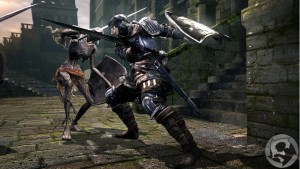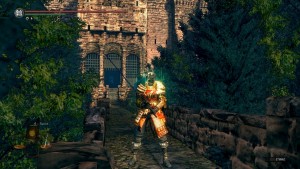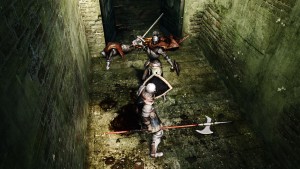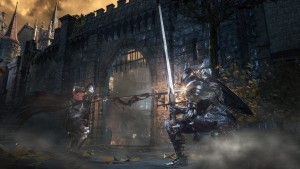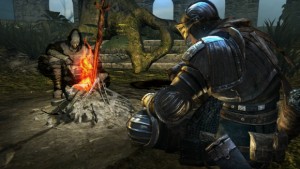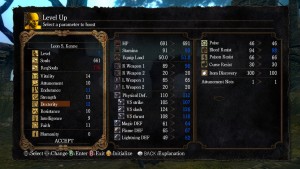In Dark Souls, an important element of gameplay is utilizing the items the player has. A well-rounded player will have at least basic knowledge of variable items to incorporate into traversing the world. With that said, there are hundreds of items throughout the game and different categories of some I won’t touch on here. The basic inventory menu and HUD, estus flask, and other items are a good start to an aspiring Dark Souls player.
Every player has an inventory with no item or carry limit that can be accessed through a menu at any time. Items are picked up off the ground from killing enemies, finding chests and looting them, or purchasing them from any of the NPC vendors scattered throughout the world that the player may run into in almost every area. Armor items and weapons are also accessed through the inventory menu alongside all other items.
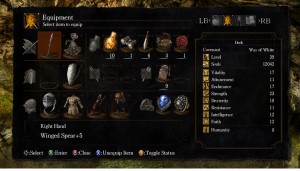
The HUD for the on-screen equipment is very simple and intuitive. On the left and right are any shields or weapons equipped; up to two of each can be equipped at any one time and cycled through. The bottom slot has quick use items the player can cycle through 5 or less. The upper slot is for equipped scrolls of spells, pyromancies, or miracles that can be cast by the player, but only if you have the necessary stats to cast these things! The number of these that can be equipped varies with stats, even 0 is possible. Accessing an in-game menu will allow the player to change which items are equipped for armor, weapons, and the quick use slots. Any casting spells can’t actually be changed at any time through the menu; these must be changed at a bonfire! So if you’re a spellcaster, choose the ones most effective for which enemies you’ll be facing.
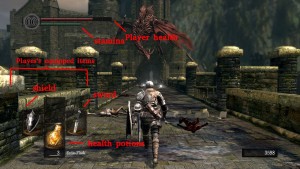
At the start of the game, the player begins with a health container called an “Estus Flask”. This is your health potion container, and “estus” is the fluid that heals you. Every player begins with enough to drink 3 full flasks, so if you encounter an enemy that starts besting you in battle or just finished defeating a tough boss, take a drink of the estus flask and it’ll heal most of your health! A number next to the flask will deplete by 1 every time you take a drink, so use them wisely. Drinking estus takes a couple seconds, so try to be out of range of enemies since the player will be vulnerable to attack. Later, it’s possible to upgrade the amount of health the estus heals the player and also how many a player can hold at one time. This is the most common quick use item usually instantly ready, but there are times the player will need other items too!
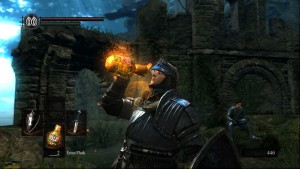
Other important items for quick use in the game can:
- cure poisoning: drains health until healed or runs out (about 20 seconds, varies with stats)
- break a curse: player has halved health, even after death, ONLY cured with an item
- stop excessive bleeding: an effect of certain weapons, drains health slowly until cured or runs out
- boost stamina recovery: lasts about 20 seconds, great for boss battles or quick enemies!
- write messages on the ground: for online play, write useful hints for other players traversing the world (no item necessary to read them though)
- weapon buffs: temporarily apply fire, lightning, or poison to currently equipped item!
- Homeward bone: return to the last bonfire rested at without dying or losing souls, great if you’re super lazy or in a really tough area you want to return to later
Hopefully this gives you a good idea about what to expect in the game. Any Dark Souls wiki has hundreds of pages devoted to the in-game items and what they do, but this is meant to be a very, very rough summary of what’s incorporated. Next time we’ll take a look at gear sets and weapons!
